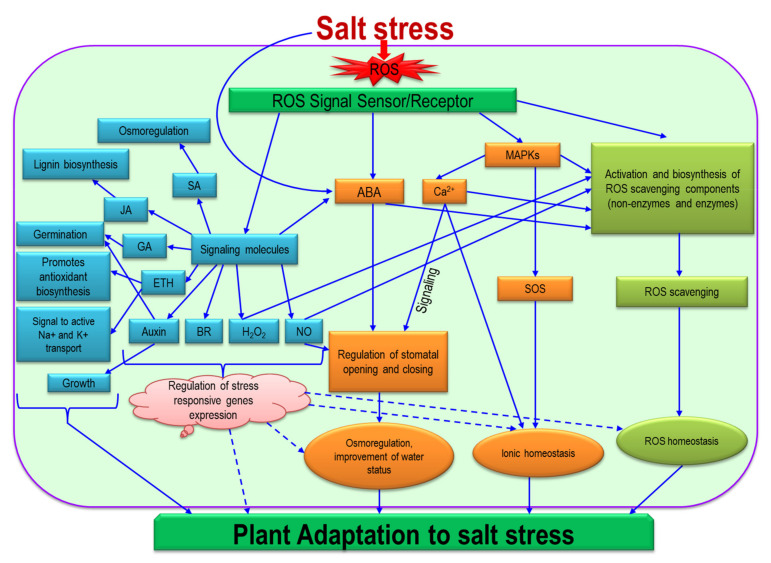Figure 8.
Common proposed ROS signaling pathways during plants’ response to salt stress. Under salt stress, ROS production induces mitogen-activated protein kinase (MAP) cascades which mediate different adaptive responses. MAPs, nitric oxide (NO), Ca2+ and other signaling molecules have been suggested to be connected in activating antioxidant defense, stomatal movement, membrane properties and ionic homeostasis. The salt overly sensitive signaling (SOS) pathway interacting with other pathways functions in maintaining ionic homeostasis. The ROS-induced ABA production and ROS-induced activation of MAPs and Ca2+ signal regulate stomatal opening and closing. ROS signal sensors/receptors can induce activation of biosynthesis/functioning of different hormones and signaling molecules such as salicylic acid (SA), jasmonic acid (JA), gibberellic acid (GA), ethylene (ETH), auxin, brassinosteroid (BR), H2O2 and NO. These hormones/signaling molecules can interact with ROS, single or multiple hormones or signaling molecules; can interact with various signal cascades/pathways; and can regulate stress-responsive gene expression which modulates various metabolic and physiological functions, contributing to plant adaptation to salt stress. Dashed lines indicate the mechanisms which are not yet identified.

